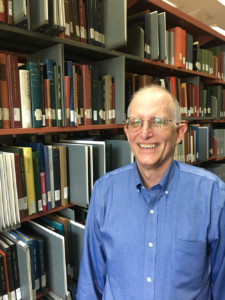Most of my research for the last two decades has been dedicated to music in Roman theater. Drawing analogies from modern musical theater, I have examined the plays of Plautus, Terence, and Seneca and the fragments of other Roman playwrights keeping two principles in mind. First, a metrical distinction in the texts of Roman plays tells us in most cases when actors sang or chanted to the accompaniment of the two-piped double reed tibia and when they spoke without accompaniment: one meter, the iambic senarius, was almost always unaccompanied, while other meters were accompanied. Second, the quantitative meters of Latin poetry tell us much about the rhythms sung by Roman actors. With just a few changes, these same principles apply to Greek drama. We can be confident that with only a few exceptions, iambic trimeters, the Greek equivalent of iambic senarii, were spoken without accompaniment and lyric meters were sung to the accompaniment of the aulos (the Greek equivalent of the tibia). Other meters, such as anapests and trochaic and iambic tetrameters, appear to have been performed sometimes with accompaniment, sometimes without. Greek, like Latin, has a quantitative meter, so when it was sung long syllables would normally be equivalent to our quarter notes, short syllables to our eighth notes. My goal, therefore, is to see what meter can tell us about musical patterns throughout ancient drama.
As I turned to Greek theater, I realized two things. The first was that Euripides would be the best place to start. Besides offering the largest corpus of Greek musical drama, Euripides marks a great transition in ancient theatrical music, incorporating both the choral, strophic rhythms of earlier Greek drama and newer styles that emphasize astrophic monodies. Those astrophic monodies were to become the dominant mode of musical performance by the time of Plautus and Terence. Second, I realized that the best way to grasp musical patterns would be to look for metrical repetition. Euripides, I am finding, often repeats the same meters at different points within a play with important thematic results.
I can think of no better place to work on this project than the Center for Hellenic Studies. The Center’s library has an incomparable collection of works both on Euripides and on Greek music and theater, its staff makes so many tasks of research easier, and my fellow researchers (including two others working on Euripides!) promise hours of stimulating conversation.
Timothy J. Moore
 Timothy J. Moore is John and Penelope Biggs Distinguished Professor of Classics at Washington University in St. Louis. He received his B.A. from Millersville University and his Ph.D. from the University of North Carolina, and he has taught at Harvard, Texas A&M University, the University of Texas at Austin, the University of Colorado, and the Ruhr Universität in Bochum, Germany. His publications include Artistry and Ideology: Livy’s Vocabulary of Virtue, The Theater of Plautus, Music in Roman Comedy, Roman Theatre, two edited volumes on Greek and Roman comedy, an online database of the meters of Roman Comedy, and articles on Greek and Roman music, theater, and literature, the teaching of Greek and Latin, American Musical Theater, and Japanese comedy. Current projects include a long-range project on musical theater in ancient Greece and Rome. He has received fellowships and grants from the American Academy in Rome, the National Endowment for the Humanities, the Alexander von Humboldt Foundation, the Mellon Foundation, the Loeb Classical Library Foundation, and the Center for the Humanities at Washington University in St. Louis.
Timothy J. Moore is John and Penelope Biggs Distinguished Professor of Classics at Washington University in St. Louis. He received his B.A. from Millersville University and his Ph.D. from the University of North Carolina, and he has taught at Harvard, Texas A&M University, the University of Texas at Austin, the University of Colorado, and the Ruhr Universität in Bochum, Germany. His publications include Artistry and Ideology: Livy’s Vocabulary of Virtue, The Theater of Plautus, Music in Roman Comedy, Roman Theatre, two edited volumes on Greek and Roman comedy, an online database of the meters of Roman Comedy, and articles on Greek and Roman music, theater, and literature, the teaching of Greek and Latin, American Musical Theater, and Japanese comedy. Current projects include a long-range project on musical theater in ancient Greece and Rome. He has received fellowships and grants from the American Academy in Rome, the National Endowment for the Humanities, the Alexander von Humboldt Foundation, the Mellon Foundation, the Loeb Classical Library Foundation, and the Center for the Humanities at Washington University in St. Louis.
